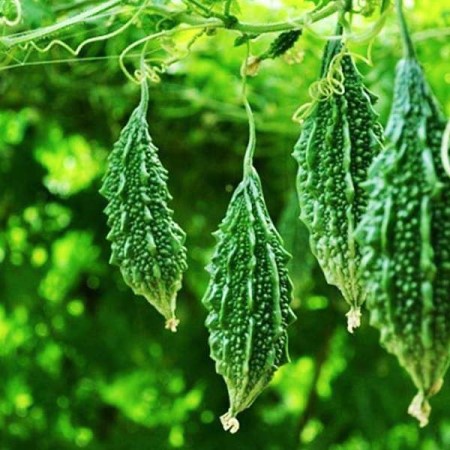The world of dog Blue Nose Pitbull breeds is as diverse as the colors of the rainbow, each bringing its own unique characteristics and charm. Among the many breeds that capture the hearts of dog lovers, the Blue Nose Puppies stands out for its distinctive appearance and loyal nature. In this comprehensive guide, we’ll delve into the origins, characteristics, and controversies surrounding this fascinating breed.

Table of Contents
You can see more about the blue nose pitbull
Origins and Heritage
To truly understand the Blue Nose Pitbull, we must first explore the roots of its lineage. The term “Pitbull” is a broad categorization that includes several breeds, such as the American Pit Bull Terrier, American Staffordshire Terrier, and Staffordshire Bull Terrier. The Blue Nose Puppies is a variation that has gained popularity for its unique coat color.
The Pitbull’s ancestry can be traced back to 19th-century England, where they were originally bred for bull-baiting and later as farm dogs. The breed eventually made its way to the United States, where it gained a reputation for its strength, agility, and versatility. Over time, different lines emerged, leading to variations in size, temperament, and, of course, coat color.
Distinctive Features of the Blue Nose Pitbull
What sets the Blue Nose Pitbull apart from its counterparts is its striking blue-gray nose leather and matching coat color. The term “blue” refers to a diluted black pigment, creating a steel-gray or bluish hue. This unique feature has captured the attention of dog enthusiasts, making the Blue Nose Puppies a sought-after and visually appealing breed.
Beyond its captivating appearance, the Blue Nose Pitbull shares many characteristics with other members of the Puppies family. These dogs are known for their muscular build, athleticism, and friendly disposition. They are intelligent, trainable, and often display a strong desire to please their owners.
Temperament and Personality
Contrary to popular misconceptions, the Blue Nose Pitbull is not inherently aggressive. Like any dog, its behavior is shaped by genetics, environment, and upbringing. When properly socialized and trained, these dogs can be gentle, affectionate, and excellent family companions.
Blue Nose Pitbulls are known for their loyalty and devotion to their families. They thrive on human interaction and are generally good with children, making them a popular choice for households seeking a loving and protective pet. However, responsible ownership is crucial to ensure that these powerful dogs are well-behaved members of society.
Controversies and Misconceptions
Unfortunately, Pitbull breeds, including the Blue Nose Pitbull, have been the subject of controversy and misconceptions. Media sensationalism and misinformation have contributed to the perception of these dogs as inherently dangerous. It’s important to note that breed alone is not a reliable predictor of a dog’s behavior. Responsible ownership, training, and socialization play key roles in shaping a dog’s temperament.
Many advocates argue that breed-specific legislation (BSL), which targets certain breeds based on appearance, is unjust and ineffective. They emphasize the importance of focusing on responsible ownership practices and addressing the root causes of dog-related incidents, such as irresponsible breeding and lack of education.
Caring for a Blue Nose Pitbull
Owning a Blue Nose Pitbull comes with the responsibility of providing proper care, attention, and training. Regular exercise is essential to keep these active dogs physically and mentally stimulated. Daily walks, playtime, and interactive toys are great ways to fulfill their energetic needs.
Training should begin early and be consistent, using positive reinforcement techniques. Socialization is equally important to expose the Blue Nose Puppies to various environments, people, and other animals. This helps prevent undesirable behaviors and ensures a well-adjusted and confident dog.
Beyond the Blue Nose
In conclusion, the Blue Nose Pitbull is a captivating variation of the Puppies family, known for its unique coat color and loving nature. While controversies surround the breed, responsible ownership and education are key to fostering positive relationships between these dogs and the communities they inhabit.
Understanding the origins, characteristics, and care requirements of the Blue Nose Pitbull is essential for anyone considering this breed as a companion. By dispelling myths and promoting responsible ownership, we can appreciate the true essence of these loyal and affectionate dogs, going beyond the blue nose to see the heart and soul of the remarkable Pitbull family.Blue Nose Puppies have become a hot topic in the world of canine enthusiasts, captivating the hearts of many with their unique charm and distinctive appearance. In this comprehensive guide, we’ll dive into the depths of what makes these dogs so special and sought after.
Blue Nose Pitbulls, often revered for their striking blue-gray noses, have gained immense popularity in recent years. Dog lovers across the globe are intrigued by their captivating features and loyal nature. So, what exactly sets them apart from other breeds, and why are they so highly regarded? Let’s unravel the mystery.
Origin and History
To truly understand the essence of Blue Nose Puppies, we must journey back in time to explore their origin and historical significance. These dogs have a rich heritage, and tracing their roots reveals the evolution of a breed that has endured through various eras.
Distinctive Features
What gives Blue Nose Puppies their unique identity? In this section, we’ll delve into the physical characteristics that make these dogs stand out. From their coat color to their muscular build, every aspect contributes to their allure.
Temperament and Behavior
Contrary to common misconceptions, Blue Nose Pitbulls exhibit a range of temperamental traits that make them exceptional companions. We’ll debunk myths and shed light on the true nature of these affectionate and loyal dogs.
Training Tips
Training a Blue Nose Pitbull requires a blend of patience and understanding. Discover effective methods to ensure a well-behaved and obedient furry friend. Socialization plays a key role, and we’ll guide you through the process.
Health Considerations
Like any breed, Blue Nose Puppies have specific health considerations. Learn about common issues and gain insights into maintaining their well-being for a long and happy life.
Legal and Ethical Aspects Health Considerations
Owning a Blue Nose Puppies often comes with preconceived notions. We’ll address legal considerations and ethical responsibilities, shedding light on the truth behind these beloved dogs.
Myths vs. Reality
Separating fact from fiction, this section aims to dispel myths surrounding Blue Nose Pitbulls. Arm yourself with accurate information to challenge misconceptions.
Breeding Guidelines
For those considering breeding Blue Nose Pitbulls, responsible practices are crucial. Gain valuable insights into ethical breeding and tips for both breeders and potential buyers.
Famous Blue Nose Pitbulls
Explore the lives of some famous Blue Nose Pitbulls that have left an indelible mark on popular culture. Their stories showcase the breed’s versatility and charm.
Companionship and Family Life
Are Blue Nose Pitbulls suitable family pets? We’ll explore their compatibility with families, sharing heartwarming tales of companionship that defy stereotypes.
Training Success Stories
Read inspiring narratives of successful Blue Nose Pitbull training experiences. These stories highlight the intelligence and adaptability of this remarkable breed.
Grooming Tips
Maintaining the well-groomed appearance of Blue Nose Pitbulls is essential. Discover practical grooming tips to keep your furry friend looking and feeling their best.
Community and Support
Connect with like-minded Blue Nose Pitbull enthusiasts through communities and online resources. Discover a network of support for owners and lovers of this exceptional breed. In conclusion, Blue Nose Pitbulls are not just dogs; they’re loyal companions with a rich history and unique qualities. By understanding and appreciating them, we can foster responsible ownership and celebrate the joy they bring into our lives.
Frequently Asked Questions
Q: Are Blue Nose Pitbulls aggressive?
A: No, aggression is not a breed-specific trait. Proper training and socialization play crucial roles in a Pitbull’s behavior.
Q: Do Blue Nose Pitbulls require special care?
A: Like any breed, they need regular exercise, a balanced diet, and routine veterinary check-ups for optimal health.
Q: Can Blue Nose Pitbulls live in apartments?
A: Yes, with proper exercise and stimulation, Blue Nose Pitbulls can adapt well to apartment living.
Q: Are Blue Nose Pitbulls good with children?
A: Yes, they can be excellent family dogs when raised and socialized properly from an early age.
Q: How can I find a reputable Blue Nose Pitbull breeder?
A: Research breeders carefully, visit their facilities, and ask for references to ensure ethical and responsible breeding practices.



















